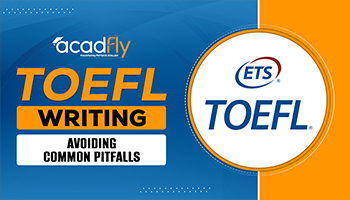
The IELTS Reading section is a critical component of the test, and mastering the True/False/Not Given questions can significantly impact your score. These questions are designed to test your ability to interpret and analyze detailed information from the passage. This comprehensive guide will provide you with effective strategies, tips, and practical steps to excel in these questions. Whether you’re looking for specific strategies or general tips, this guide covers it all.
Understanding True False Not Given Questions
True/False/Not Given questions are integral to the IELTS Reading section. Here’s a closer look at each type:
-
True: The statement accurately reflects the information provided in the passage.
-
False: The statement contradicts the information presented in the passage.
-
Not Given: The passage does not provide sufficient information to determine the validity of the statement.
Example: If the passage states, "The company increased its production by 20% last year," and the statement reads, "The company decreased its production last year," the answer would be False. If the passage makes no mention of production changes, the answer would be Not Given.
How to Identify True False Not Given in IELTS
Identifying the correct answer involves a precise approach. Here’s a step-by-step guide on how to identify True/False/Not Given in IELTS:
1. Read the Passage Thoroughly
Start by carefully reading the passage to get a general understanding. Focus on the main ideas, arguments, and specific details that might relate to the statements. This initial reading helps set the context for the questions.
2. Highlight Key Information
Highlight or underline key phrases and terms as you read. This technique will assist you in locating relevant sections when answering True/False/Not Given questions. Key terms in the questions often correspond to specific parts of the passage.
3. Understand the Question Statement
Read each True/False/Not Given question carefully. Identify the key terms and specific information you need to verify against the passage. Understanding the statement's context is crucial for accurate comparison.
4. Locate the Relevant Passage Section
Find the part of the passage that corresponds to the keywords in the statement. Skim through the text to pinpoint where relevant information is discussed. This focused approach saves time and improves accuracy.
5. Analyze and Compare
Compare the statement with the passage information:
-
True: If the statement is supported by the passage, mark it as True.
-
False: If the passage provides information that contradicts the statement, mark it as False.
-
Not Given: If the passage does not provide enough information to determine the statement’s accuracy, mark it as Not Given.
6. Look for Paraphrasing
IELTS passages often use paraphrasing. Ensure you understand how the statement relates to the passage’s wording. Look out for synonyms or rephrased ideas. For instance, if the passage says, "The temperature dropped significantly," and the statement says, "The temperature fell dramatically," they both convey the same meaning.
7. Cross-Check for Accuracy
Ensure your answer aligns with the passage by cross-checking with different parts of the text if needed. This thorough review helps confirm that your response is accurate and well-supported.
True False Not Given IELTS Tips
Mastering True/False/Not Given questions requires specific strategies and consistent practice. Here are some valuable tips:
1. Practice Regularly
Engage in regular practice with IELTS reading True/False/Not Given practice materials. Familiarize yourself with various question types and passage formats. Using practice tests helps you develop skills and gain confidence.
2. Understand Common Traps
Be aware of common traps in True/False/Not Given questions. Misleading details or partial truths can easily confuse you. Ensure that your answer reflects a comprehensive understanding of the passage, not just isolated pieces of information.
3. Manage Your Time Wisely
Time management is crucial in the IELTS Reading section. Allocate specific time for each question and avoid spending too long on any single question. If you're uncertain, move on and revisit challenging questions later.
4. Develop a Strategy
Create a systematic approach for answering True/False/Not Given questions:
-
Read the question first: Identify what to look for in the passage.
-
Find the relevant section: Locate the part of the passage related to the statement.
-
Analyze and compare: Determine whether the statement is True, False, or Not Given based on the passage.
5. Use the Process of Elimination
If unsure, use the process of elimination. Rule out options that are incorrect based on the passage. This method increases your chances of selecting the correct answer.
Step-by-Step Guide to Answering True False Not Given Questions
Here’s a detailed, step-by-step approach to answering these questions effectively:
Step 1: Read the Statement and Passage Carefully
Understand what each statement is asking and read the corresponding part of the passage thoroughly. Look for keywords and phrases that are related to the statement.
Step 2: Identify Key Terms and Concepts
Highlight or underline key terms in both the statement and the passage. This practice helps you pinpoint where the relevant information is and ensures that you’re comparing the correct details.
Step 3: Compare the Statement with the Passage
Determine if the information in the statement matches, contradicts, or is absent from the passage. Make sure your answer is based on a thorough analysis of the text.
Step 4: Double-Check Your Answer
If time permits, review your answer to ensure it aligns with the passage. Recheck for accuracy and verify that you haven’t overlooked any important details.
Step 5: Move On if Needed
If you’re unsure about a question, move on to the next one and return later if time allows. Sometimes working on other questions can provide additional context or clarity.
Tips for IELTS Reading True False Not Given
To refine your skills further, consider these additional tips:
1. Stay Focused
Maintain concentration while reading and answering questions. Avoid distractions to enhance your accuracy and performance.
2. Practice with Various Texts
Engage with different types of texts and question formats to develop versatility. This exposure helps you adapt to different styles and subjects.
3. Analyze Incorrect Answers
Review mistakes to understand why certain answers were incorrect. Learning from errors helps you avoid similar mistakes and improves your accuracy.
4. Seek Feedback
If possible, get feedback from teachers or peers on your practice answers. Constructive criticism provides valuable insights and helps you refine your approach.
5. Use Online Resources
Leverage online tools and resources specifically designed for IELTS preparation. These resources offer targeted practice and additional strategies for mastering True/False/Not Given questions.
Frequently Asked Questions
1. What is the difference between True, False, and Not Given in IELTS Reading?
2. How can I improve my skills for True False Not-given questions?
3. What are some common mistakes to avoid in True False Not Given questions?
4. How should I handle tricky True False Not Given questions?
5. Where can I find good practice resources for True False Not Given questions?










